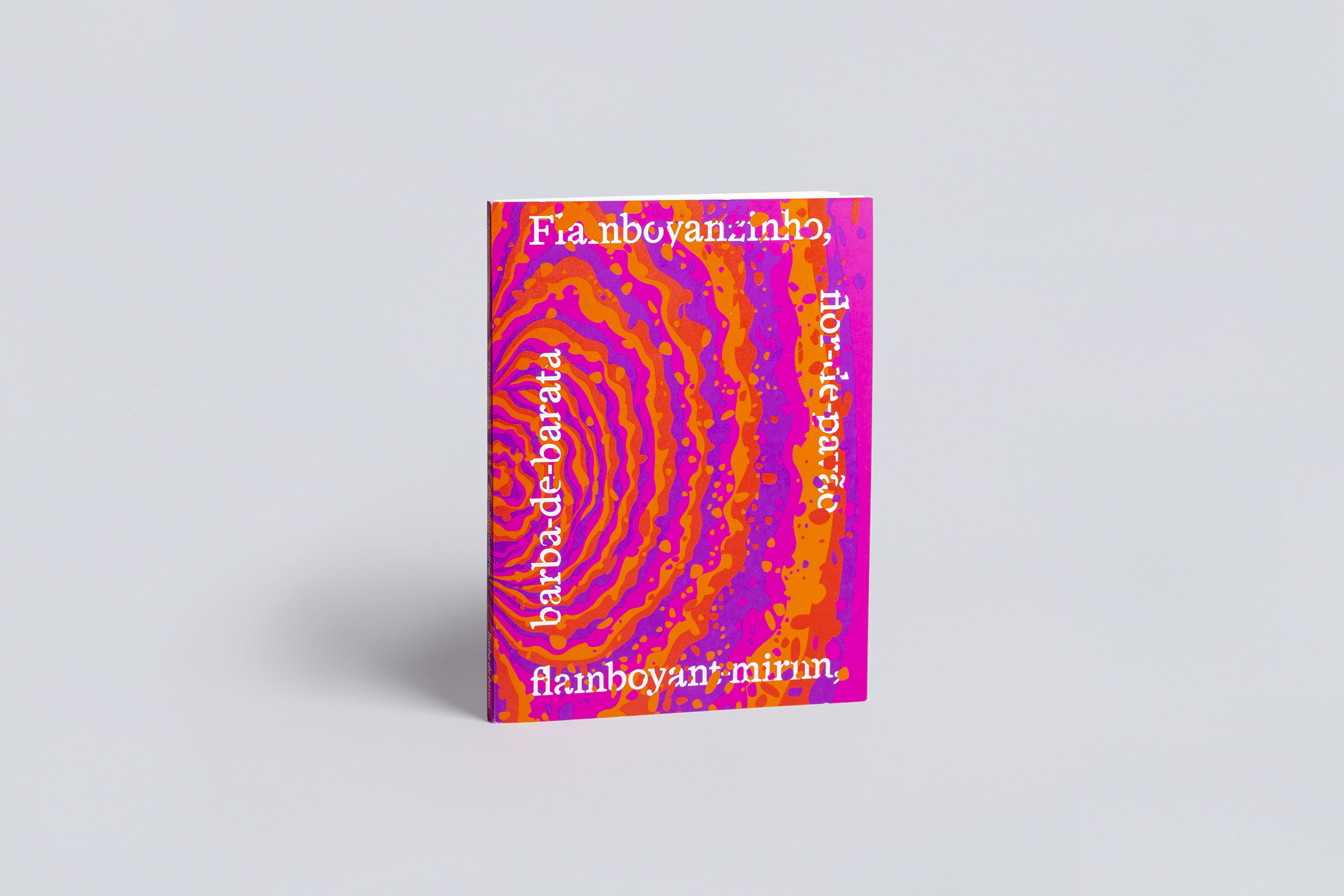Catalogue documenting the exhibition Flamboyanzinho, Flor-de-pavão, Flamboyant-mirim, Barba-de-barata, curated by Julia Coelho and Renan Araujo, which was on view at Galeria da Boavista between 6 November 2021 and 30 January 2022. In addition to the photographic documentation of the works exhibited, this publication features texts by Djaimilia Pereira de Almeida, Julia Coelho, Renan Araujo, Thiago Gonçalves and Tobi Maier.
“The water gurgled softly without disturbing the life of the blackbirds and the bees. The sun, on high, seemed to herald a burial. Perhaps, this was a good place to die, in the shade of the giant pine tree. Indeed, if he had a hoe, he would dig his own grave there. But neither the birds, clouds nor the stones were the slightest bit concerned about his afflictions.”
-Djaimilia Pereira de Almeida
“Following this rationale, all the works on display in this exhibition are imbued with transcendental energy. They constitute a set of works that allude to the agency of sacred sites and plants.”
-Tobi Maier
“When Europeans settlers arrived in the Caribbean in the late 15th century, cassava was the main crop cultivated by the local Taino Indians. They knew the power of its roots and leaves, they knew that its properties could be deadly or nutritious. Their enslavement by the settlers was often considered to be a fate worse than death. As a form of resistance, they ate the raw cassava root knowing that the hydrocyanic acid would kill them, thereby freeing them from torture and exploitation.”
-Thiago Gonçalves
“The toxic, curative, and performative properties of the Flor-de-pavão like those of other migrant plant species, played an important role in the political and social dynamics of the colonial period whose reverberations can still be felt today. Together with the other works and artefacts gathered in this exhibition, these properties now help us reflect on notions of transit, be they oceanic, psychic, metabolic, subterranean, hormonal, poetic or cultural.”
-Julia Coelho and Renan Araujo





